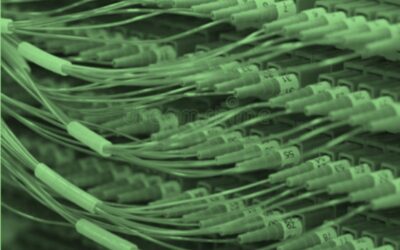EAD2 – the future of Ethernet services
In this third instalment of our blog series, we’ll discuss how EAD2 is the future of Ethernet in the UK and how this represent a significant opportunity for CPs but is not without challenges during the transition period.
How is Ethernet delivered today?
To illustrate the current EAD delivery model, consider a simplified view:
1. Customer Site: At the customer’s location, an Openreach termination device connects to the customer’s Local Area Network (LAN) and IT/network infrastructure.
2. Access Network: The Openreach termination device is connected to the Openreach access fibre, which carries the network service back to the local exchange.
3. CP Connection: The Communications Provider (CP) connects to the Openreach fibre within a rack at the exchange.
4. Backhaul Network: The CP’s backhaul network transports the Layer 2 traffic back to Systems Integrators (SIs) or Network Aggregators’ handover points within the UK. For Layer 3 services, the traffic may be routed directly to the internet.
While this provides a basic overview, there are numerous additional technical considerations involved in the actual delivery of EAD services, including extra planning for resilient services.
EAD Delivery: a labour intensive and costly process
The delivery of EAD services often involves multiple coordinated engineering visits to the customer site, requiring network and building surveys, installation and testing by Openreach, the CP, and the end customer often addressing early-life issues and configuration challenges. These processes can be particularly complex and costly in remote, uninhabitable or challenging locations that may require civil works or wayleave approvals. And again resiliency add further complexity.
The whole delivery process is labour intensive, costly and often requires significant project management, especially for large-scale networks with hundreds of sites. Similar challenges may arise during the in-life management of the service, including regrades and fault resolution.
As outlined in the Single Fibre Network blog, Openreach aims to automate, reduce, and standardise network hardware, manual engineering, and configuration as much as possible. The handover will be to a passive device, This will require CPs and their end customers to redesign their engineering and customer delivery models, potentially assuming some tasks currently performed by Openreach at the customer premises. This shift presents both opportunities and challenges compared to the existing model.
When CPs utilize FTTC, FTTP, or SOGEA to also deliver Ethernet services, they may encounter similar complexities and costs as with full-fibre dedicated Ethernet. These challenges can be further exacerbated when multiple services or CPs are used for redundancy or other purposes.
Understanding EAD2
EAD2 represents a new approach to Ethernet Access Direct (EAD) services that makes the delivery model closer to FTTP.
Openreach aims to create shared virtual head-end devices that replace the CP racks. These shared devices will be managed by Openreach, providing CPs with a managed service that includes space and power. This means CP’s move from a costly space and power model to a managed port based/cable link model, very much like FTTP.
The ports on these shared devices will be software-configurable, allowing for flexible allocation of service. At the customer site, Openreach will deliver a passive, low-cost handover device. This allows CP’s or their business customers to use their own standards-based CPE’s providing significant in life experience improvements and project roll out cost benefits. There is also the possibility of Openreach installing a CP-approved configurable termination device, which is currently under discussion as part of a pilot scheduled for September or October 2024.
While it’s not currently planned to allow migration from existing EAD services to EAD2 or as part of Openreach’s Exchange Exit program, these options may be considered in future phases.
EAD2: Opportunity and Threat for CPs
EAD2 presents both significant opportunities and challenges for Communications Providers (CPs).
On the one hand, it offers the potential to reduce costs, automate delivery and configuration processes, and enhance customer experiences. End customer, Systems Integrators (SIs), and Network Aggregators can set up their own services using secure SD-WAN/SDN models connected to the Openreach passive termination devices. Openreach should also be able to provide significantly enhance in life diagnostics as SI’s/Aggregators adopt industry standard hardware. This all should transform the flexibility and cost effectiveness of Ethernet services.
However, the coexistence of two separate delivery models—EAD and EAD2—during the transition period poses a challenge. Managing these parallel models requires significant investment in systems and processes by CPs, SIs, and Network Aggregators. This extra cost may limit the opportunity in the transition period.
Another consideration is the parallel emergence of Alternative Networks (Altnets), Virgin’s mooted move into wholesale and Openreach’s Exchange Exit. By mapping the right combination of technologies and partners, CPs can create a robust migration and transformation strategy for the long term but navigating the two separate delivery models, Exchange Exit and the potential of Altnets is a huge challenge
How we help
Acuity Insight and its team of dedicated network & services professionals have a deep industry understanding of how to plan a key network transformation working with Openreach. We can assist you in making informed decisions and developing comprehensive, actionable plans to ensure a successful transition.
To discuss how Acuity Insight can support your organization in navigating this transformative process, please contact us for a free and confidential consultation.





0 Comments